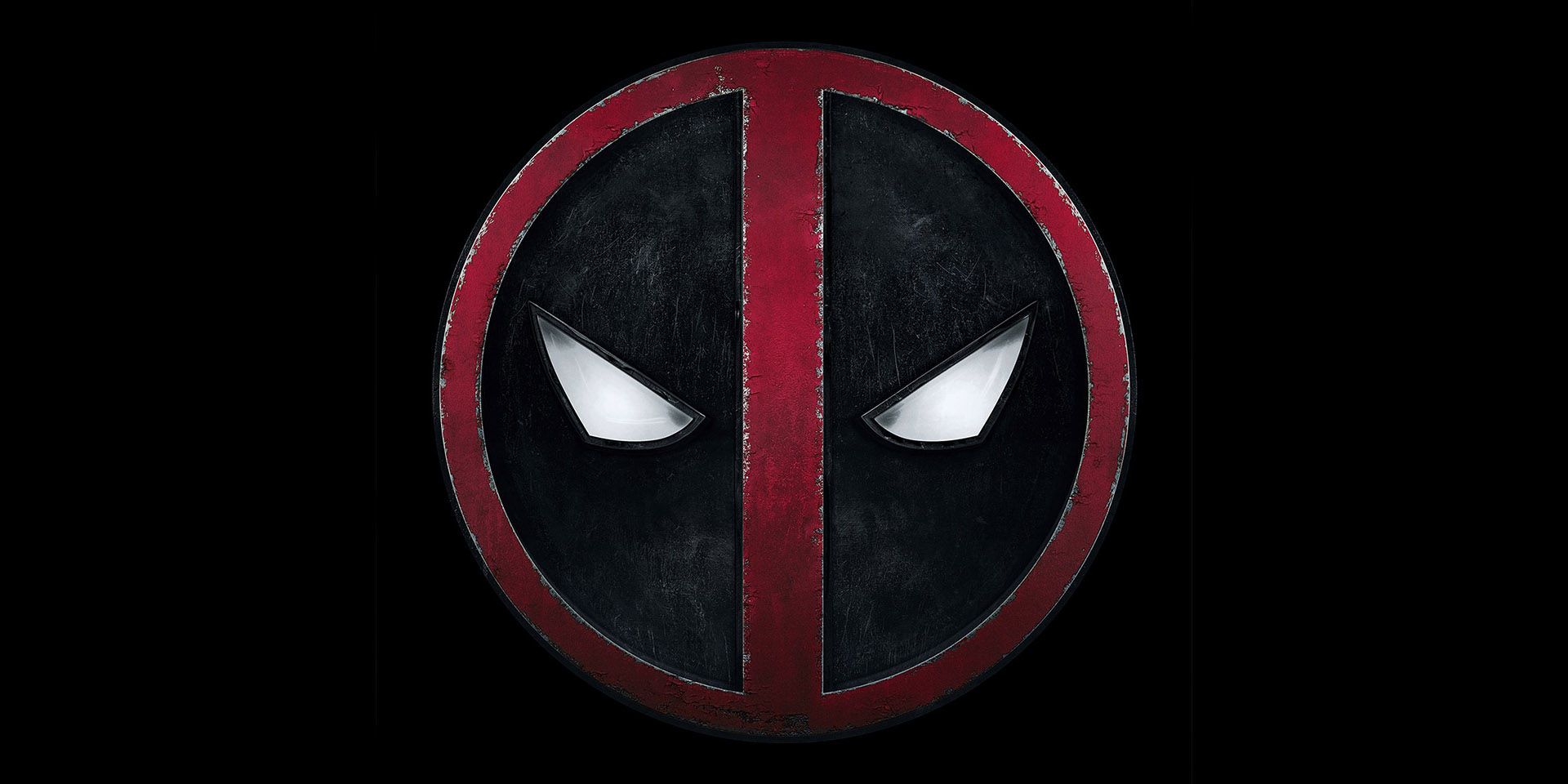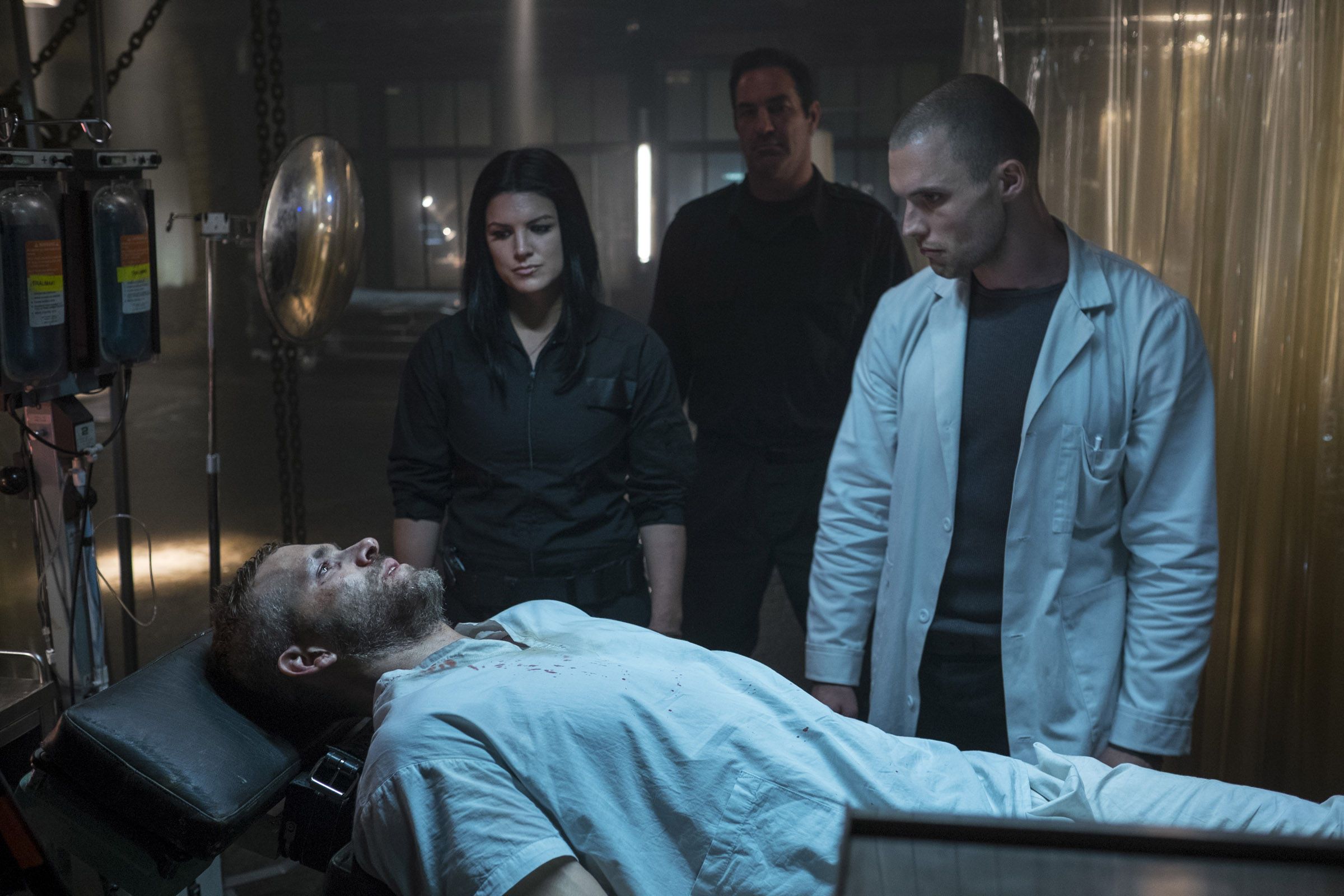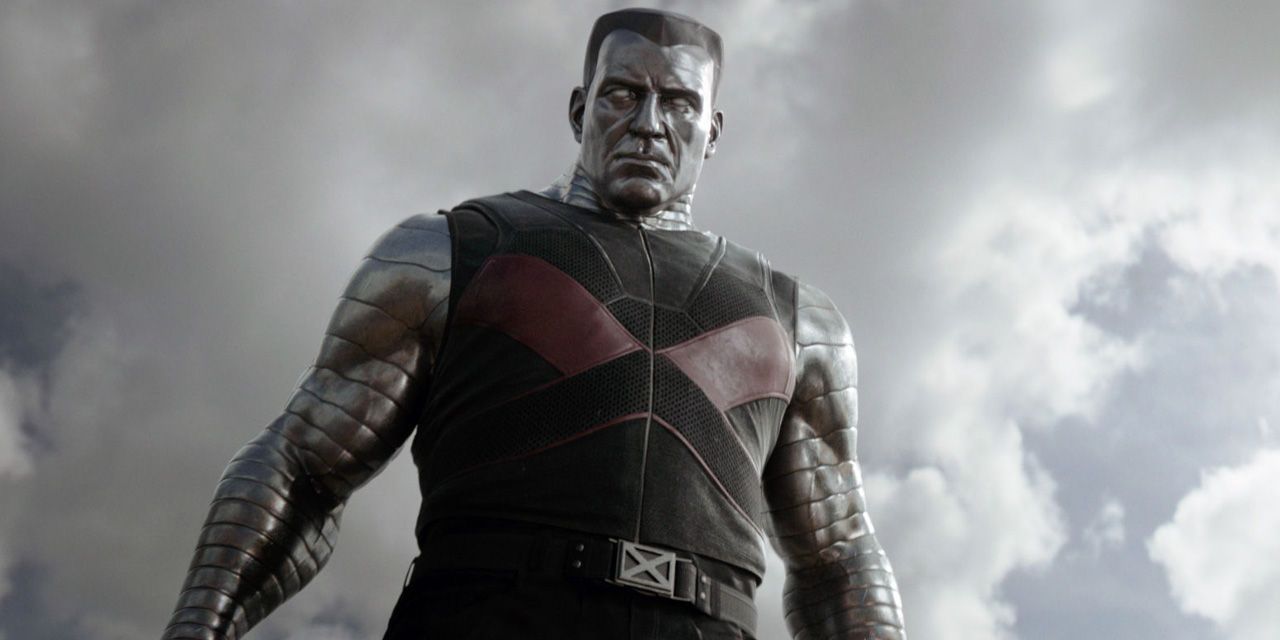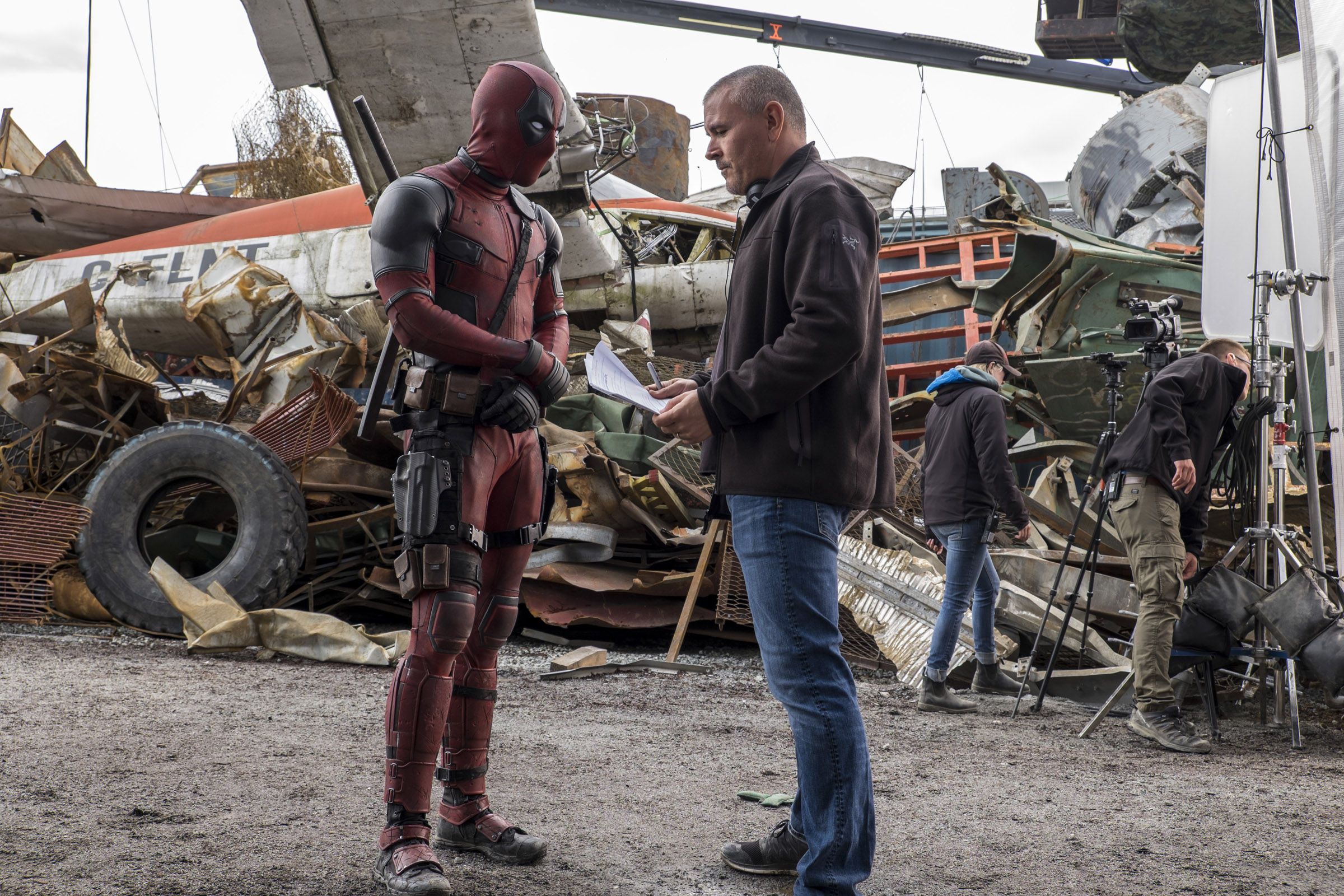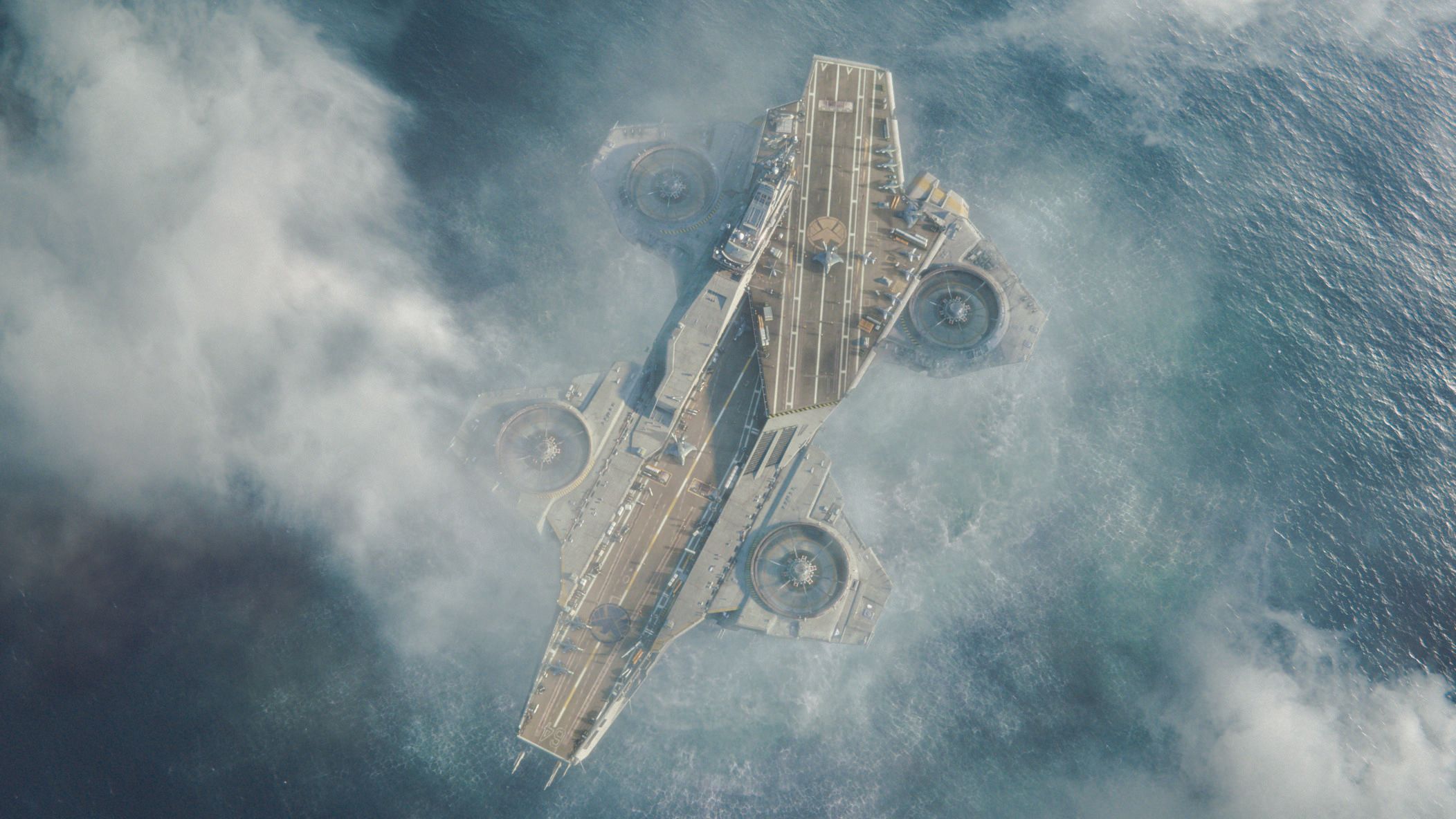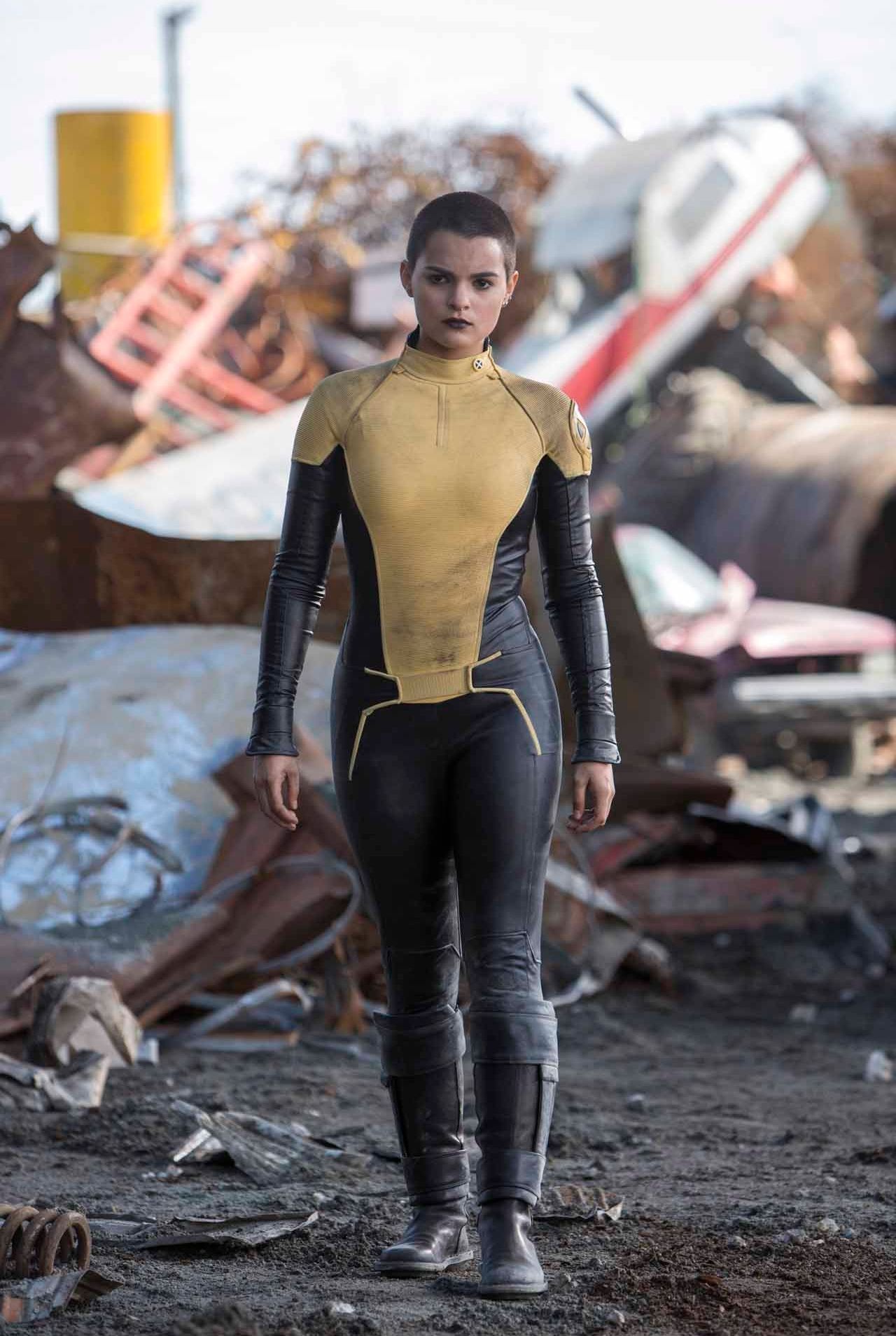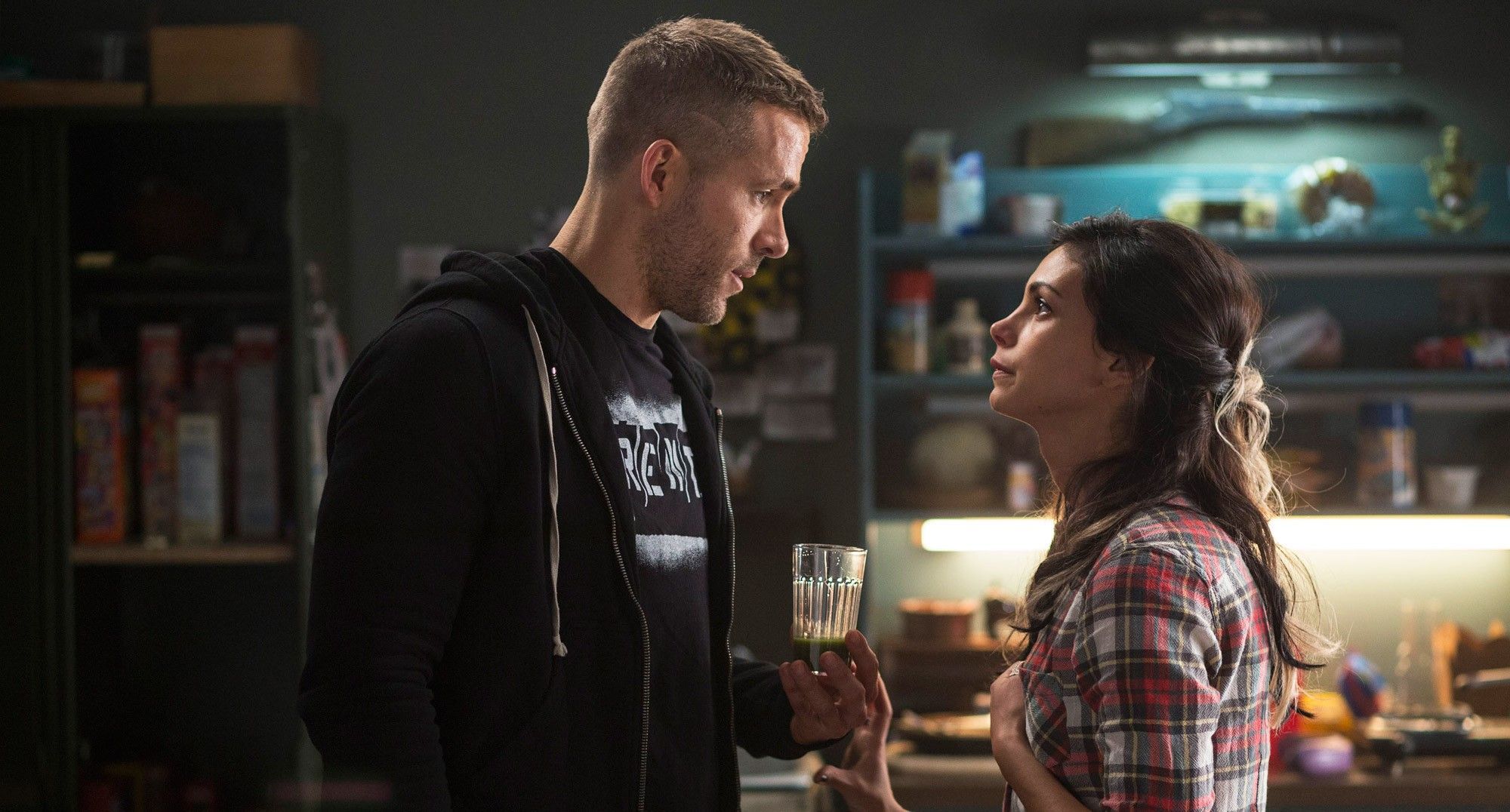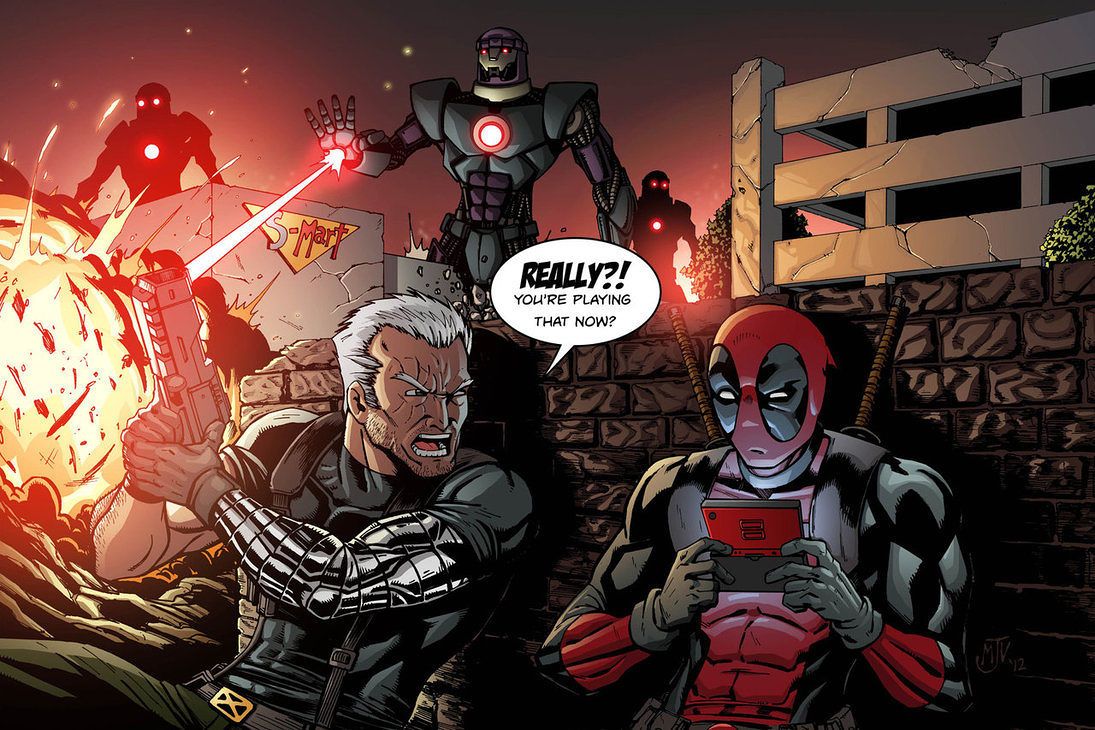In May of 2015 we traveled to Vancouver, British Columbia to check out the set of Twentieth Century Fox's Deadpool, the first non-Hugh Jackman X-Men spinoff. To begin the day we browsed through some very revealing concept on display in a tent that sheltered us from the hot summer weather, before screenwriters Rhett Reese and Paul Wernick came in to chat.
Reese and Wernick made their mark in Hollywood for writing the smash hit Zombieland but before that had the chance to write a script for Venom movie for Sony as well. Deadpool has been their most involved project though since they've been writing and revising it every year for six years.
In our conversion, I ask the pair about the development of Deadpool and how the project has ultimately benefited from its evolution over the years based on collaboration - from Ryan Reynolds' need to include an origin story in the first movie to director Tim Miller's desire to include more mutant powers. We also discuss how the Deadpool ultimately got an R rating, the other mutant characters and their powers, their first comics, how writing Deadpool is any writer's dream due to his personality and ability to break the fourth wall, and planning ahead for Deadpool 2. And yes, I also question them about the 12 images I saw which hint at an Act III set piece set in a scrapyard featuring a helicarrier...
You guys made a script for this a while ago. When was that first commissioned? Was it after X-Men Origins: Wolverine came out?
Rhett Reese: It was. Fox came to us in, I think it was June of 2009 and said they wanted to reboot Deadpool, which it was in need of, let’s just say. We pitched a vision for it to Ryan and they ended up hiring us, and we ended up writing in, what, the winter… I guess it would be early in 2010 is when we finally started writing.
Paul Wernick: We’ve been on the project 6+ years now. Ryan’s been on the project I think 11+ years, since Deadpool was at New Line, then went over to Fox. So it’s been a passion of his and quickly became a passion of ours.
Rhett Reese: And it was a very collaborative process. We first pitched a story to Ryan that was not an origin story, interestingly, because we thought that was a little old-fashioned. But when he heard it, he thought, “You know, I love it, but I also want to include an origin because we just need to understand his pathos and his issues.”
And so, we did this dual narrative where the script moves back and forth from present to past and we see how Deadpool became Deadpool, and we also see him in action in a present adventure. That was a function of us and Ryan kind of putting our heads together and figuring it out.
It’s gone through many iterations since then as well. We wrote a PG-13 version. We first started writing an R version, then it became PG-13, then back to R. and we’ve written multiple iterations. When our director came on we changed some things. So it’s been a…
Paul Wernick: And we’ve written a draft in each of the last six calendar years.
Rhett Reese: Yeah. We have drafts upon drafts.
Looking at the artwork it seems vastly different than the version I read a couple years ago. What are some of the big changes that were made?
Rhett Reese: I wouldn’t say vastly different. I would say it’s maybe 30% different from that draft that leaked. I’m assuming that’s the one you read, maybe it leaked on the internet…?
Yeah. It spread around the tracking boards and…
Rhett Reese: Yeah, yeah. Exactly. There are a few sort of key differences. One is the character of Negasonic Teenage Warhead. That was Tim Miller, our director. We had a lot of gun fighting scenes and he wanted to emphasize a little bit more sort of superpowers and superheroes. So he said, “Maybe we can figure out a way to introduce a new superhero.” So he gave us this list of names…
Paul Wernick: Yeah, a list of names that Fox kind of owned in the X universe. We didn’t even read the powers. We locked on Negasonic Teenage Warhead and we’re like, “Oh my god. We love her.” She quickly became an integral part of our movie.
Rhett Reese: We lost a couple characters. We had Garrison Kane and Wire in earlier drafts. Just due to budgetary reasons we lost those.
Paul Wernick: They both ultimately got consolidated into Angel Dust, into Gina Carano’s character.
Rhett Reese: Which is probably good, because when you have a proliferation of villains that doesn’t always work. Sometimes it seems like the more villains there are, the muddier the movie gets…
Paul Wernick: We didn’t want to be Spider-Man 3. Didn’t Spider-Man 3 have a bunch of villains?
Rhett Reese: That happens. There have been a fair amount of Batman movies like that.
After going back and forth between a PG-13 and R rating before settling on going R, are their concerns about losing a segment of the moviegoing audience?
Rhett Reese: First it was R. We wrote it R… they told us to write it the way we wanted. And then I think there was just a little concern that there’s a ceiling on how well you can do financially when it’s rated R because there’s a certain bulk of the audience who just can’t go and won’t pay to go. So we decided to change it to PG-13. They decided that was the best move.
We actually like the PG-13 draft. It’s didn’t feel like we were selling out. But we still, in our heart of hearts, were hoping that they would make it R. When did that finally come together? It was Simon, really.
Paul Wernick: Simon, yeah. There were two drafts floating around over the last year. Simon Kinberg came aboard and he read both drafts, and he’s the keeper of the Fox X-Men universe; ultimately most trusted over there. He read both drafts and he’s like, “Oh my god. You’ve got to do it R because there really is a hole in the market place in terms of the audience has really never seen this.” The superhero market is so oversaturated. Guardians of the Galaxy filled a little bit of a hole there with the comedy side of it. But to go comedy, hard R just felt like an opportunity. And if they could keep the budget down, really it was the best move. And we’re most excited about that decision.
I know you guys said there’s been a lot of revisions in the last couple years. When the project was finally greenlit, was that based on a final script or did you guys have to make changes after that as well?
Rhett Reese: We still made changes. But once a script has been greenlit, the changes tend to be due to budget and production issues and letting the script actually become a shootable movie that’s not too costly and that matches locations and things like that. And then we’ve done a little character polishing, a little dialogue polishing. But I would say from the moment it got greenlit till now it’s 95% the same. Once they greenlit the movie, they are greenlighting a piece of material in that case, in this case.
There are now three X-Men movies in one year, all releasing in 2016. Was there a push to meld it towards fitting in that universe or is this more standalone?
Paul Wernick: I’d say it’s more standalone but it lives within the X universe if that makes sense. Colossus is in our movie. What else?
Rhett Reese: Yeah, I mean it certainly will fit into the overall timeline that Simon’s envisioning. And he’s the keeper of that, so if we ever violate that… there have been a couple of moments that felt like they wouldn’t fit in as well, but I’m trying to remember what those would be in retrospect. In any case, we do fit into the larger universe. The question would be: what happens next?
If I had to guess, I’d say, in success, there would probably be a Deadpool 2, a standalone Deadpool, and then he would be inserted into the ensemble movies in some fun way. That’s a guess.
Paul Wernick: We’re going to call it Deadpool: Avengers, I think.
[laughter]
How is it writing for a character that can break the fourth wall?
Rhett Reese: It’s the best. Writing for Deadpool is the best. We were given a great gift in this character. He’s a lot of things. He’s a lunatic. He’s a talker. He’s a romantic. He’s an overgrown child. He’s a killer. And he has the capacity to break the traditional storytelling rules. He is very self-aware that he’s in a story, that he’s in a movie in this case. In the comic book he kinda knows he’s in a comic. Here he knows he’s in a movie. He can break the fourth wall and talk directly to the audience.
It’s very freeing as a writer because you really never get a chance to do that. Suddenly, you are handed this Christmas gift and this character that allows you to break many rules. We have Deadpool making fun of that Wolverine movie and making fun of his action figure from that movie. We have Deadpool talking about Ryan Reynolds, which is funny. Those are the kinds of things you would never be afforded the chance to do with any other character other than this character. So it’s been wonderful.
Paul Wernick: He’s also an anti-hero. He’s a broken soul. He’s not kind of the broad-shouldered superhero type that everyone’s used to seeing. So that also was freeing. He’s self-loathing. And he’s got a couple of screws loose in his head. They say write what you know, right? So we really tapped into that in a fun way.
Next Page: A Revenge Tale Involving A... Helicarrier Set Piece?
Do you remember your first comic?
Rhett Reese: Yes. In fact, I absolutely remember it. The very first comic that got me turned on to the whole genre was an Avengers episode where this Olympian god kidnapped The Beast and was going to kill The Beast and forced Iron Man to attack Hercules to weaken him so that he could defeat Hercules. Iron Man was immediately my favorite character because I pictured myself in the suit of armor. So I just fell in love with Marvel comics. I didn’t read much DC. It was almost entirely Marvel. It started from that comic. I read a ton of Iron Man, a ton of Avengers and West Coast Avengers.
Interestingly, I’d kind of gotten out of comics by the time Deadpool came around because I just wasn’t reading them as much. So, Deadpool I had to educate myself later.
Paul Wernick: I can’t remember what I had for breakfast this morning.
[laughter]
Is this more of a revenge story? Does Deadpool act as a hero in the traditional sense?
Paul Wernick: I’d say it’s more of a revenge story. It’s many things. It is a romantic comedy, a love story between two broken souls, Vanessa (Copycat, and Wade. It is a revenge story. It’s a story of redemption.
Rhett Reese: There is good versus evil in it. I mean Deadpool is very much an anti-hero. He’s made mistakes. He’s got blood on his hands often. He is willing to kill people. So he’s not the perfect person. But we juxtaposed him against a guy who is that much worse, just much, much worse. So even though it is a personal story of revenge, it also, I think, is a story about a morally gray guy defeating an evil guy…
Paul Wernick: And who wants, ultimately, to be a better person.
You made a joke about the title of the sequel. But that *pointing at concept art on walls* looks like the helicarrier from the Avengers films. How does that fit into the story?
Rhett Reese: What happens is in Act 3, Ajax, our villain, is trying to soften Deadpool up for the kill, so to speak. So he lures Deadpool out to this scrapyard, essentially. And among the things in the scrapyard is an old kind of beat up, decommissioned helicarrier. So it’s sitting there and it becomes a big set piece, part of the fight, this massive fight between Colossus, and Angel Dust, and Negasonic, and Ajax, and Deadpool, and a ton of thugs. So it’s just a great playground.
But this is like the twisted dark side of the helicarrier we’re used to seeing. It’s not gleaming, and shiny, and cool, and flying through the air. It’s been sold for scrap, essentially.
Paul Wernick: That was a big Tim… the helicarrier, when Tim came aboard, he felt like we needed to up the ante a little bit and kind of give it scope and scale and also make it fit into this bigger world.
Can you tell us about…you talked about adding a new character, Negasonic Teenage Warhead. Can you talk about some of the other characters and their abilities? We see Colossus a lot in these images.
Rhett Reese: Colossus we all know. Angel Dust, she’s kind of like The Hulk. She’s super strong. But the more adrenalized she gets and the more she fights she gets stronger, so that’s fun to watch. Ajax can’t feel pain. He’s had basically all of his nerve ending cauterized, so he both literally and metaphorically can’t feel anything. So he’s super creepy in that regard. I’m trying to think…
Paul Wernick: Well, Negasonic Teenage Warhead was… her powers in the comics were simply, I think, mindreading. She was a mind reader. We added the fact that she’s kind of explosive; that she can turn into an explosive weapon herself.
Rhett Reese: Yeah, she’s kind of a living, breathing warhead.
Paul Wernick: Interestingly, she wasn’t like that. You would think with a name like Negasonic Teenage Warhead she would be explosive, but she was not. So we added that.
Rhett Reese: And that’s it. I think those are our only…
Paul Wernick: Ajax…
Rhett Reese: Yeah, I mentioned Ajax.
What about Copycat?
Rhett Reese: Yeah, we haven’t addressed the copycat part of her nature in this movie. So she’s just Vanessa for now. It will remain to be seen if she actually turns out to be Copycat or how she turns out to be Copycat. But for now, as far as she knows, she’s just your average human being.
The way this movie ends, does it clearly set up the sequel or some other film?
Paul Wernick: It does…
Rhett Reese: It does…
Paul Wernick: Whether we take that path on the next one, we’re not sure. We’re still kind of…
Rhett Reese: Yeah, we don’t tie up every thread. So there’s definitely a hanging thread at the end of the movie. Whether that’s the one we choose to pursue, we’ll see.
So you guys have ideas in mind of what you would like to see…
Paul Wernick: We’re starting to think about it.
Next Page: Blind Al, Rob Liefeld and Introducing Cable Next
One of my favorite parts about the Deadpool character is this relationship with Blind Al. You can see the apartment here. Can you talk about that and how much that relationship is in the film?
Rhett Reese: Yeah. We love Blind Al because she’s the least likely roommate you’d ever expect Deadpool to have. We changed their origin story from the comics or how they met each other. They meet on Craigslist, basically. He needs someone to help bear the burden of the rent. In this case, he finds someone and he agrees to pay the rent as long as she kinda cleans up around the place and helps with chores.
Paul Wernick: And builds his Ikea furniture.
Rhett Reese: Yeah. So, in this case she has to build his Ikea furniture. She’s terrible at it because she’s blind, A, and because, B, he kinda sabotages her, like there are never enough screws to fit into the stuff. She makes the stuff and it falls apart, and he loves giving her a hard time about that.
But I would say she gives as good as she gets. That’s what’s so great about her. She is certainly not a person whose condition or disability has defined her in any way. She is not a victim in the least. She’s very, very strong and very capable. When he takes the piss out of her, she gives it right back to him in spades. So it’s kinda cool to see their repertoire.
Paul Wernick: It’s an emotional relationship in that they kinda love… In a strange way, I don’t know if you’d say mother and son or what. But there is this deep affection between these two very mismatched… this very mismatched couple.
Rhett Reese: We’ve had a lot of fun with just that basic idea. If you look at people in life, they are most abusive to the people who they really love, and abusive in a fun way, oftentimes. You really see the closest of friends be the most likely people to say horrible things to each other and about each other. We kind of have that in this movie. Weasel and Deadpool have a very similar relationship. They shoot back at each other. And Colossus and Deadpool and Negasonic and Deadpool, even though they are on the same side in this movie by the end, they’re constantly going back and forth with him with insults and various antagonisms.
Paul Wernick: We really looked at this movie, at this ensemble of mismatched folks as a wonderful dysfunctional family. Much like Zombieland, we put these disparate souls together and they had to travel down a road and become this family. That’s a little bit what Deadpool and his ensemble is in this movie. It’s this one big fucked up family that’s trying to get along and make their way through the world.
Was Rob Liefeld, the creator of Deadpool, somehow involved in script process?
Rhett Reese: No. he wasn’t involved in the script.
Do you talk to him about it?
Rhett Reese: Oh yeah, absolutely. We have a great relationship with him. He’s awesome. He gave us the gift of this amazing character and he’s a tireless and passionate advocate for this character and this movie. I don’t think we’d be here… we certainly wouldn’t be here without him, and I don’t even think the movie would have been made without his enthusiasm and pushing at all times. So we adore him.
He also has a cameo in the movie, so you might want to keep your eyes open for that.
Are there any other X-Men characters that we haven’t seen in the films yet that you guys want to play with in this universe?
Paul Wernick: Cable.
Rhett Reese: Yeah, we talk about Cable because he’s so kind of inextricably linked with Deadpool over the years. Other than that, I don’t think we’ve made any decisions. We reference Professor X in the movie. It’s like he’s someone who’s… Deadpool is on his radar and he’s been trying to get him to kinda come in and do the right thing and Deadpool wants to part of it. So there may be some fun to be had there. We’re just going to have to see how it meshes with the rest of the X universe. I’m sure we’ll kinda clear the deck and say, “OK. Who might be fun to bring into this family we’re already formed if we get as far as a sequel,” which we all hope for.
Guys, thank you so much. We really appreciate you coming all this long way and writing about us. It’s very nice.
More: Colossus Will Finally Be Russian in Deadpool Movie
Tim Miller directs the film from a screenplay by Paul Wernick and Rhett Reese. It is produced by Simon Kinberg, Lauren Shuler Donner, and Ryan Reynolds, starring Ryan Reynolds, Morena Baccarin, Ed Skrein, Gina Carano, T.J. Miller, Brianna Hildebrand, and Leslie Uggams.
Based upon Marvel Comics’ most unconventional anti-hero, DEADPOOL tells the origin story of former Special Forces operative turned mercenary Wade Wilson, who after being subjected to a rogue experiment that leaves him with accelerated healing powers, adopts the alter ego Deadpool. Armed with his new abilities and a dark, twisted sense of humor, Deadpool hunts down the man who nearly destroyed his life.
Deadpool opens in theaters February 12, 2016; X-Men: Apocalypse on May 27, 2016; Gambit on October 7, 2016; Wolverine 3 on March 3, 2017; Fantastic Four 2 on June 9, 2017; and some as-yet unspecified X-Men film on July 13, 2018. The New Mutants is also in development.

